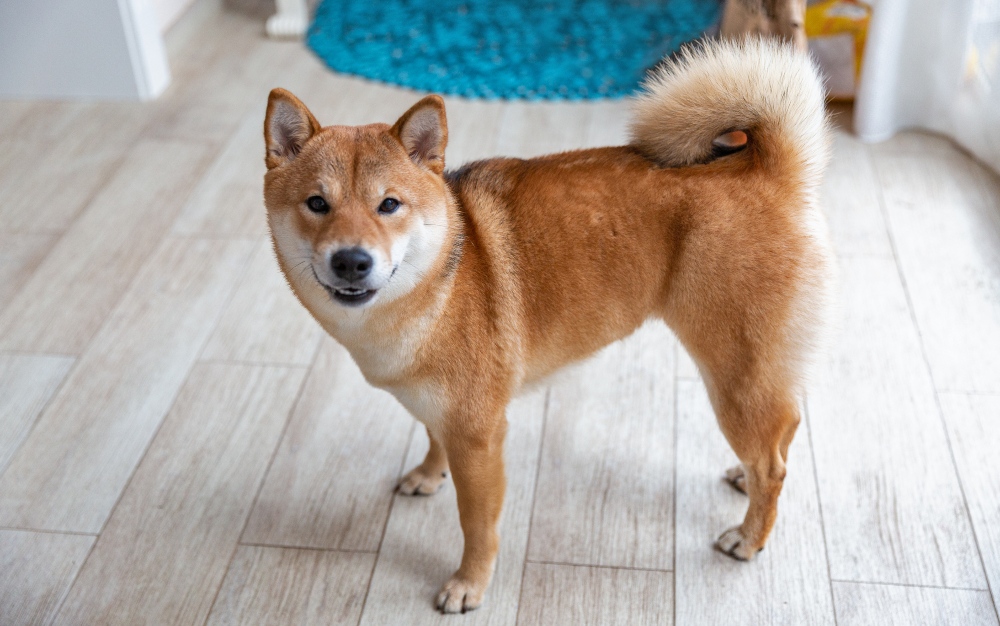Table of Contents
Introduction to Shiba Inus
The Shiba Inu is a Japanese breed of dog that has been in the U.S. for less than a century. These are small-midsize dogs that typically live long and healthy lives while adapting easily to various lifestyles. Shiba Inus are generally regarded as good-natured pups that have foxlike characteristics and a sturdy, muscular build. They are bold and confident dogs that are a pleasure to be around and get to know on a personal level.
If you’re looking for a small but mighty companion that’s well-rounded and very smart, you might just find your perfect dog in a Shiba Inu! Read on to learn more about this breed and how to protect your Shiba Inu with pet insurance.
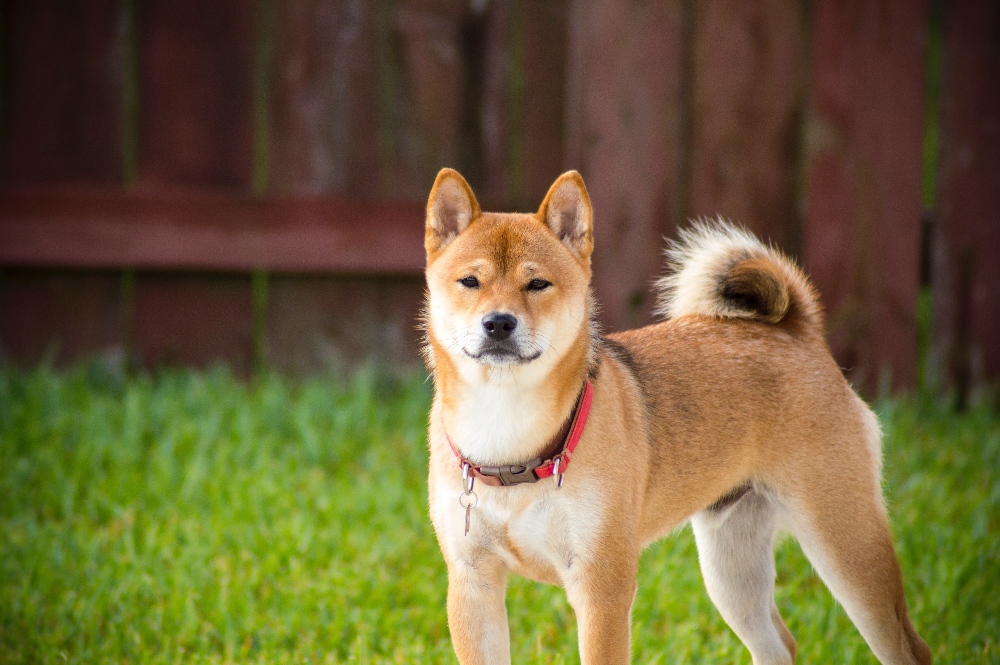
Size of Shiba Inus
Shiba Inus grow to become about 23 pounds for males and 17 pounds for females when fully grown. For this size of dog, there is a significant difference in the size between males and females. Males reach heights of about 14.5 to 16.5 inches tall, while females get to be 13.5 to 15.5 inches tall, on average.
Shiba Inus usually have about four to five puppies in their litters. These puppies will stop usually growing by the time they are one year old. However, some pups continue to get slightly bigger until they are 18 months old. Here’s how big you can expect your Shiba Inu to get as he or she gets older.
| Weight Chart | 3 months | 6months | >12 months |
|---|---|---|---|
| Male Shiba Inus | 7 – 10 pounds | 13 – 18 pounds | 18 – 24 pounds |
| Female Shiba Inus | 6 – 8 pounds | 11 – 15 pounds | 16 – 19 pounds |
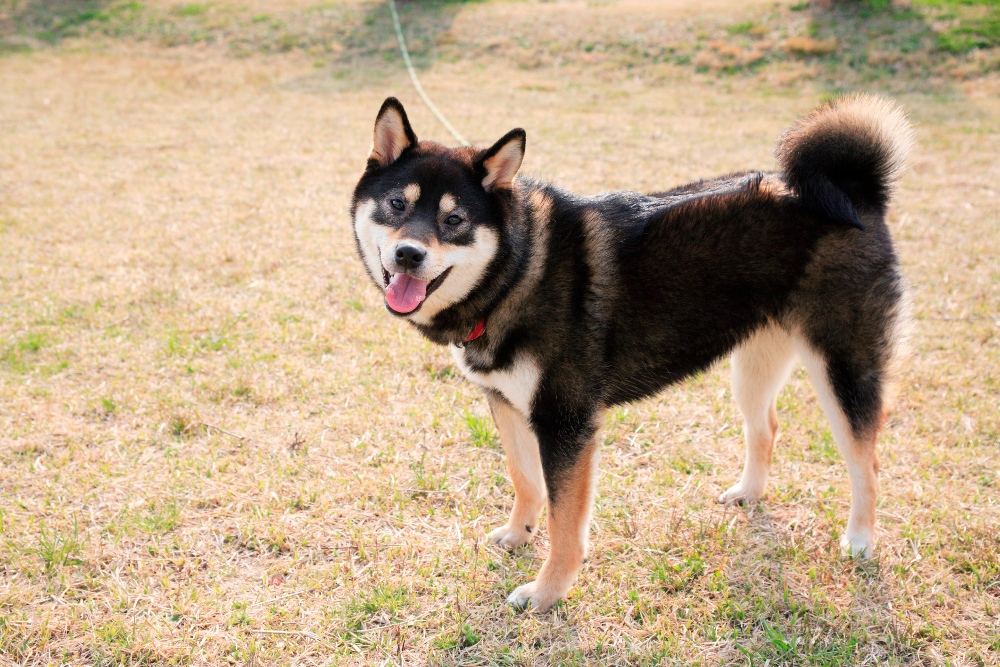 Characteristics of Shiba Inus
Characteristics of Shiba Inus
Shibu Inus are adaptable dogs that do well in apartments and other small living spaces. They are independent pups that don’t mind being left alone every once in a while, which stands out as something significant compared to many other types of dogs. These dogs do better with cold weather than hot weather and are generally affectionate towards the people they know.
This breed is known for having bold and feisty personalities and for being intelligent and strong-willed. This means that they aren’t always the easiest dogs to train. Therefore, a Shiba Inu is not usually regarded as the best choice for a first-time dog owner, although you can certainly make it work with effort! They are athletic and move very quickly with alert sensibilities. Shiba Inus are free-thinkers in the dog world and can be possessive with toys and food. Yet these are loyal family dogs and they can often be trained to tolerate children. They can be wary of strangers and often act aloof towards them, but they tend to be loving to their own families.
As you get to know a Shiba Inu’s personality, here’s what you can expect based on his or her breed characteristics.
| Breed Characteristic | Level (High, Medium, Low) |
|---|---|
| Affectionate with People | High |
| Good with Kids | Medium |
| Good with Pets | Medium |
| Need for Exercise | Medium |
| Energy Level | Medium |
| Intelligence Level | High |
| Able to Be Trained | Low |
| Amount of Barking | Medium |
| Amount of Shedding | High |
History of Shiba Inus
Shiba Inus have a long history as an ancient breed of dogs in Japan. There are records that date these pups’ origin back to at least 300 B.C., and the breed’s name means “brushwood dog.” They were originally hunting dogs in the rugged, mountainous regions of Japan for a long time and actually almost became extinct around the World War II era. However, the breed survived those wartime years and has even become popular in the U.S. over the last 50 to 60 years.
Shiba Inus are the oldest and smallest breed of Japanese dogs. These dogs were bred to be hearty survivors and hunt big game. They are the top companion dog in Japan now in modern times. But in the U.S., they weren’t officially recognized as a breed by the American Kennel Club until 1992.
Shiba Inu Standard Information
The Shiba Inu has characteristic white markings and an overall coloring that is red, red-brown, or black and tan. They have well-developed muscles and are very keen and alert, which makes Shiba Inus great watchdogs. There are distinct differences in the appearances of male and female Shiba Inus, which you will notice once you get to know this dog breed a bit better.
Here is an overview of the breed standard information for Shiba Inus.
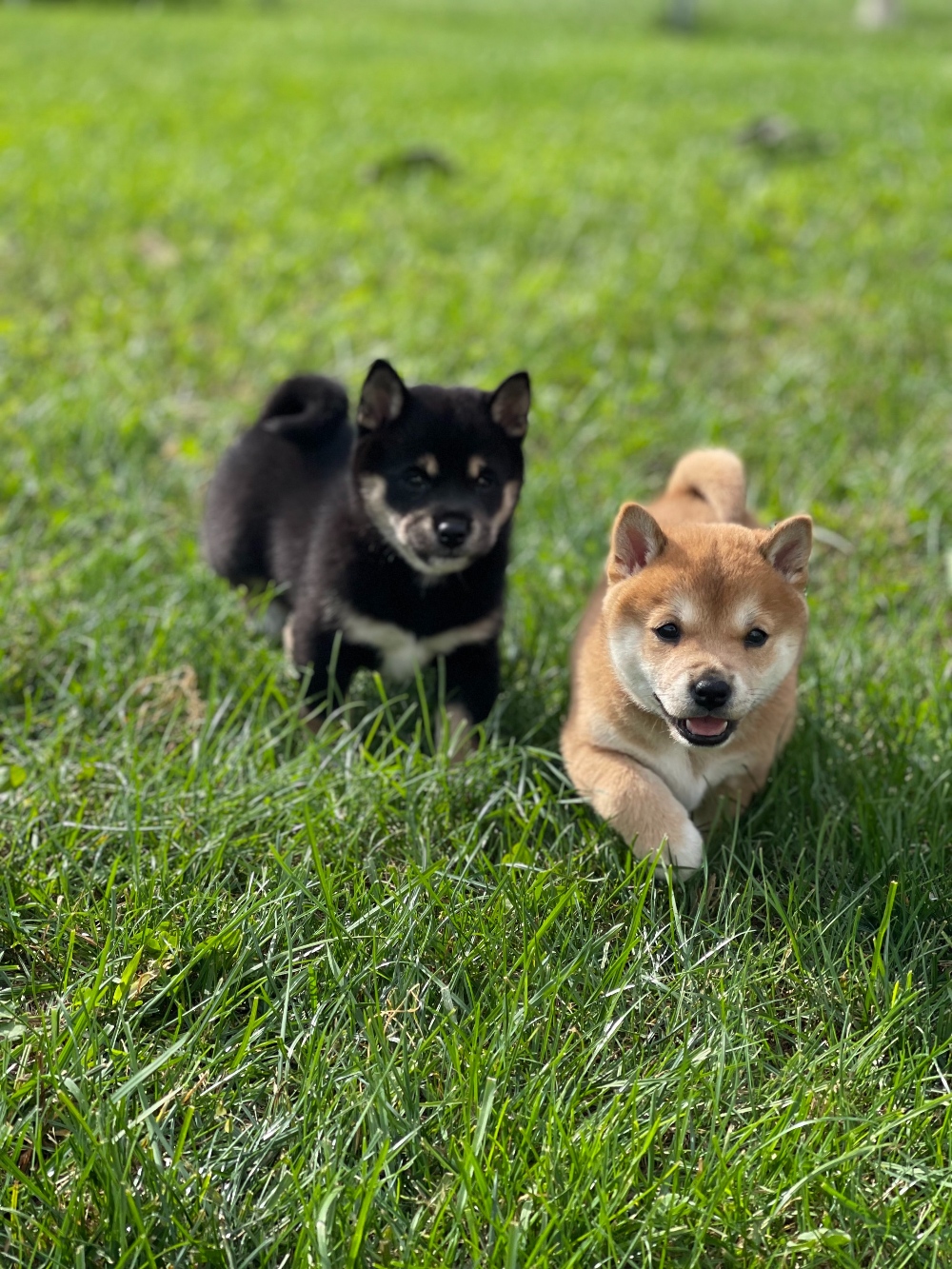
Head:
- Eyes triangular in shape and deep-set
- Confident gaze
- Moderate skull size
- Firm and full muzzle
- Scissors bite with evenly aligned teeth
Neck, Topline, Body:
- Thick, sturdy, and moderate length neck
- Muscular body without coarseness
- Thick and powerful tail
Forequarters:
- Elbows close to body
- Forelegs and feet moderately spaced
- Catlike feet with well-arched toes
Hindquarters:
- Strong hock joint
- No dewclaws
Coat:
- Double coated with stiff and straight outercoat and soft and thick undercoat
- Short fur on face, ears, and legs
- Tail hair slightly longer
Color:
- Cream, buff, or gray undercoat
- Varieties are urajiro, reds, blacks and sesames, and black with tan points
- Three main colors are given equal consideration for show dogs
Gait:
- Light and nimble movement
- Loose lead at a brisk trot in the show ring
- Dignified and naturally beautiful temperament
Caring for Shiba Inus
Shiba Inus will do best in a house with a fenced yard. These are active dogs who get a lot out of yard play and also going on walks and jogs with their owners. It’s important to socialize this breed of dog early so that they grow up to be well-rounded and friendly towards other dogs. They have a strong prey drive, especially for small animals like cats and squirrels. This is why it’s a good idea to keep Shiba Inus fenced in while running around at home. They don’t necessarily enjoy being restrained, but it’s for their own safety and requires some patience on the part of the dog and pet parent.
Here are some general tips for taking the best care of a Shiba Inu.
Best Living Environments:
- House with yard
- Okay in apartments as long as they get frequent walks
- Do fine with pet parents who are gone during the day
- Dogs prefer cold weather to hot weather
Type of Exercise:
- Playtime with other dogs after socialization
- Walks and short jogs in the neighborhood
- Exercise shouldn’t be too intense
Mental Enrichment:
- Athletic training that challenges dogs’ brains
- Agility exercises
- Games of fetch for human engagement
Training Strategies:
- Be extra patient while training this strong-willed dog
- Start training as early as possible
- Be mindful about the dog’s strong prey drive
- Housebreaking is easy and crates can be used
Grooming Tips:
- Only minimal grooming is needed
- Be aware that shedding happens twice per year
Common Health Problems of Shiba Inus
Allergies often affect Shiba Inus and result in itching and skin irritations. It can be difficult to identify the correct allergen in dogs, but responsible breeders do not breed Shiba Inus that have active allergies. The allergies typically appear after a dog has reached at least the age of six months old.
Overall, Shiba Inus are generally healthy dogs that often live to 13 to 16 years. Because of the conditions to which this breed is prone, the National Breed Club recommends that Shiba Inus are tested by a vet with a hip evaluation, ophthalmologist evaluation, and patella evaluation.
These are some of the most common health issues that arise with Shiba Inus.
- Patellar luxation
- Cataracts
- Glaucoma
- Allergies
- Distichiasis
- Cancer
- Epilepsy
Diet and Nutrition for Shiba Inus
Fully grown Shiba Inus need about ½ cup to 1 ½ cups of dry dog food per day, divided into two meals. These dogs can be prone to obesity, so it’s important to monitor your dog’s weight as a way of preventing medical conditions from forming.
Some people choose to prepare their own food at home for Shiba Inus, while commercially bought food is commonly used for these dogs as well. Highly rated dog foods for Shiba Inus include AvoDerm — Natural Chicken Meal & Brown Rice Formula Adult Dry Dog Food, Castor & Pollux — Organix Grain-Free Organic Chicken & Sweet Potato Recipe Dry Dog Food, and Nutro — Wholesome Essentials Large Breed Adult Farm-Raised Chicken.
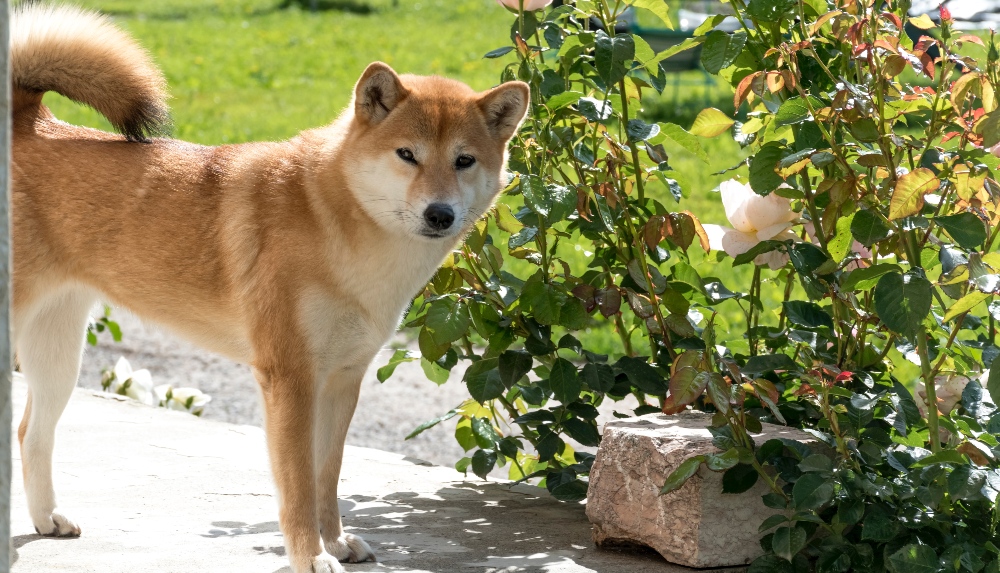
Where to Adopt or Purchase Shiba Inus
If you are interested in inviting a Shiba Inu to live in your home, you might contact the National Shiba Club of America, which has a breeder directory and Shiba rescue resources to check out depending on whether you want to purchase or adopt a pet.
AdoptAPet.com is a resource for finding adoptable Shiba Inus based on your location and the distance you’re willing to travel to find one. Depending on where you live, there may be a rescue organization that specializes in caring for and adopting out these types of dogs. If you would rather purchase a purebred Shiba Inu, the American Kennel Club Marketplace lists 100% AKC puppies from AKC-registered litters.
Related Breeds
Shiba Inus are unique dogs, but there are similar and related breeds that you might also be interested in if this description of the Shiba Inu appeals to you. Consider these other breeds as well before you adopt or purchase a new pet:
- Kai Ken
- Hokkaido
- Akita
- Shikoku
- Kai Dog
- Kishu
Pet Insurance for Shiba Inus
Living with a Shiba Inu is definitely a unique experience and a really fun time for pet parents and their families and friends. No one likes to think about their Shiba Inu getting sick or hurt, but illnesses and accidents happen to even the most agile and hearty dogs, including this breed.
To plan ahead for whatever comes your Shiba Inu’s way, we offer easy-to-understand pet insurance plans with no expensive add ons and the option to use any licensed vet you choose. Your pet’s vet bills will be eligible for coverage just as long as they’re not for a pre-existing condition or otherwise excluded from your policy.
To learn more, contact us or request your pet insurance quote today for your Shiba Inu.
